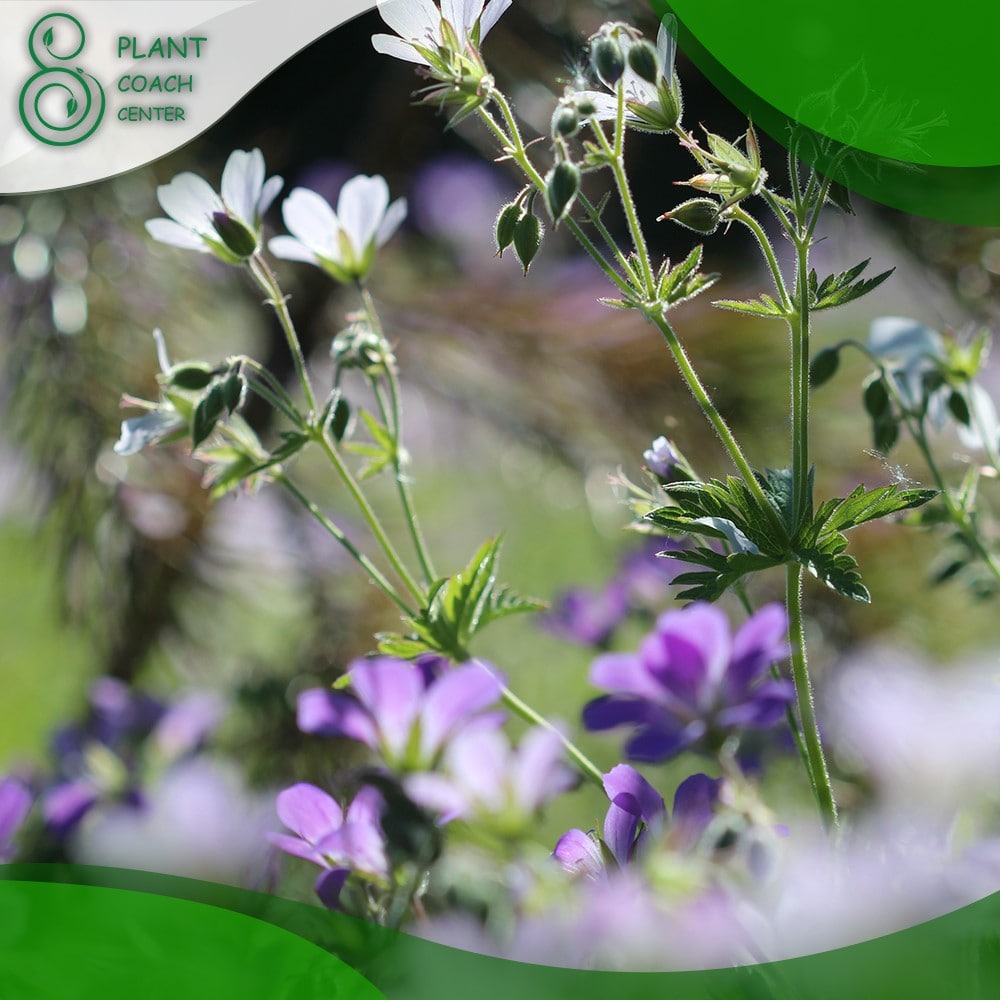When to Divide Perennials?
Welcome to the world of perennial plants—a realm where nature’s resilience and beauty intertwine. Amidst the rhythmic seasons, perennials stand as steadfast companions, gracing our gardens with a tapestry of colors and textures year after year. Yet, even these stalwarts of the plant kingdom need fresh air to continue their vibrant journey.
This is where the art of dividing perennials comes into play—a horticultural symphony that transforms a single plant into a chorus of growth, ensuring its health, vigor, and the magnificence it brings to our landscapes. As gardeners, we hold the conductor’s baton, knowing when to harmonize with nature’s rhythms and strike the rejuvenation chord.
In this article, we journey through time and technique, unraveling the enigma of “When to Divide Perennials.” From deciphering a perennial’s silent cries for division to mastering the delicate maneuvers, we uncover not only the science but also the artistry that breathes new life into our cherished botanical companions. So, pull up a chair amidst your plants, and let’s delve into the captivating overture of perennial division.
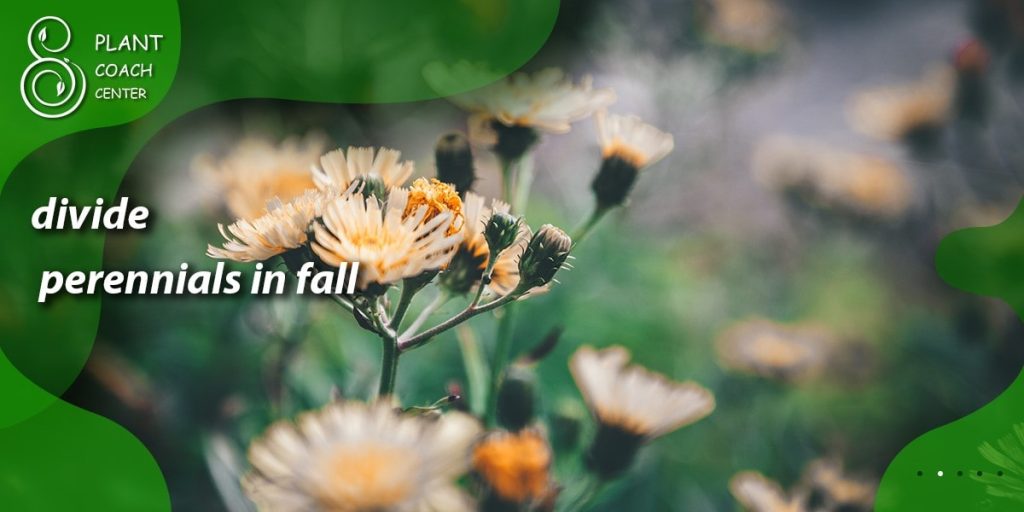
Seasonal Symphony: Dividing Perennials by the Calendar
Nature’s theater unfolds its distinct acts throughout the year, each offering a unique stage for the delicate dance of perennial division. As the curtain rises in spring, the garden comes alive with energy. This is the prime time for dividing many perennials as the soil warms up and plants emerge from their winter slumber. The ample moisture and cooler spring temperatures create an ideal environment for roots to establish in their new homes.
Some perennials might still be divided as summer takes center stage, but it requires a more cautious touch. Early summer provides a window of opportunity just after the blooms have faded. However, the heat and potential drought can place additional stress on the plants, so careful attention to watering and aftercare is essential.
Come autumn, the garden’s palette transforms again. The more excellent air signals perennials that it’s time to slow down their above-ground growth and direct their energy toward root development. This transition makes autumn another prime season for division, especially for those plants that prefer more space to stretch out.
Winter, the garden’s intermission, is generally not the time for dividing perennials, as most are dormant. However, it can be an excellent period for planning and preparing for the upcoming acts of division.
In the grand symphony of perennial division, timing is everything. Each season carries its own tune, and understanding these natural rhythms allows gardeners to choreograph the most successful performances. By aligning our actions with the cadence of the seasons, we ensure that our divided perennials take the stage with strength, grace, and the promise of a flourishing encore.
Signs of Separation: Decoding a Perennial’s Cry for Division
In the intricate language of plants, perennials have a subtle yet distinct way of communicating their need for division. By attuning ourselves to their signals, we can better understand when to intervene and provide them the space they crave.
One of the most obvious signs is overcrowding. When a perennial’s clump becomes dense and tightly packed, the plant has exhausted its available resources and is ready for expansion. Reduced flowering is another clear message, as overgrown perennials often prioritize energy to survival rather than reproduction.
Observing the plant’s overall health is crucial. If you notice a decline in vigor, stunted growth, or a weakening of the central stems, it’s likely a plea for division. Similarly, perennials that used to thrive but have suddenly started producing smaller blooms or fewer leaves indicate their need for a fresh start.
Above-ground visual cues can be complemented by subtle underground hints. If you notice the plant’s center dying out while new growth only occurs at the periphery, it indicates that division is overdue. Gently lifting the plant and examining its root system can provide additional insights. If you see a tangled mess of roots with no breathing room, the time for separation has arrived.
Understanding these nuanced signals empowers us to become fluent in the language of our garden. It’s a dialogue between gardener and plant, where we listen and respond to the unspoken requests of the perennials under our care. By recognizing their cries for division, we can step in as their caretakers, nurturing their growth and ensuring their story unfolds in vibrant chapters.
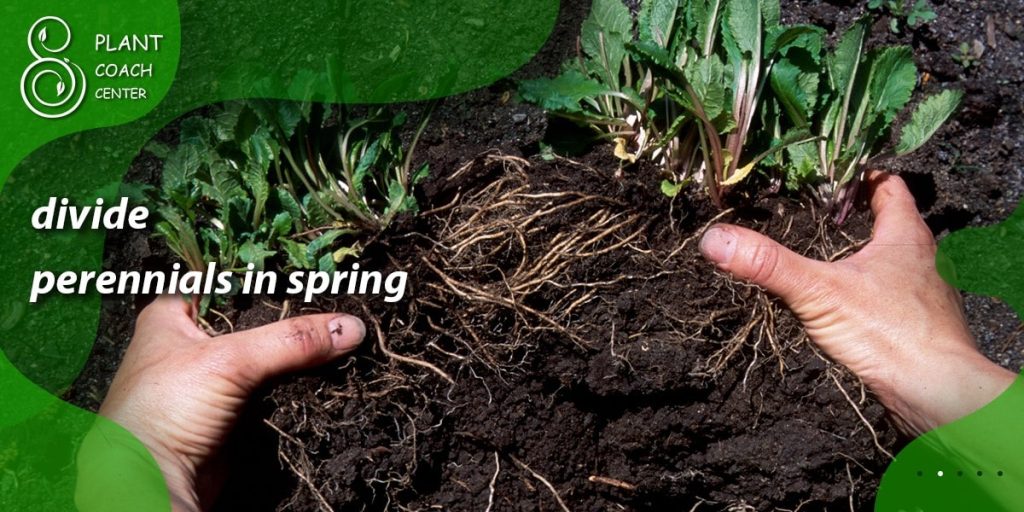
Mastering the Technique: Division Demystified
Dividing perennials may seem like a delicate operation, but armed with knowledge and the proper techniques, it becomes a satisfying endeavor that fuels your garden’s vitality. Here’s a step-by-step guide to demystify the process:
Choose the Right Time
As discussed earlier, timing is crucial. Dividing perennials at the right season, usually spring or autumn, when the plants are less stressed, sets the stage for success.
Prepare the Soil
Before you begin, ensure the soil around the perennial is well-moistened. This helps to minimize shock to the roots during and after the division.
Dig Up the Plant
Gently dig up the entire plant clump, ensuring you go deep enough to encompass the root ball. Use a fork or a sharp spade, depending on the size and toughness of the plant.
Assess the Clump
Examine the clump’s structure. Are there natural divisions or sections where the plant can be separated? Larger clumps might need more force to divide, so be prepared for some physical effort.
Divide and Conquer
Using your hands, gardening tools, or even a knife, carefully divide the clump into sections. Each division should have a healthy set of roots and shoots. Remove any dead or diseased portions.
Replant with Care
Replant the divisions promptly into prepared holes. Ensure the top of the root ball is level with the soil surface. Water thoroughly to help settle the soil around the roots.
Provide Aftercare
Closely on the newly divided plants. Water regularly, especially during the initial weeks. Applying a layer of mulch helps retain moisture and suppress weeds.
Watch Them Thrive
The divided perennials will establish themselves in their new locations with proper care. While they might take a season to fully recover and bloom, their growth will be healthier and more vigorous.
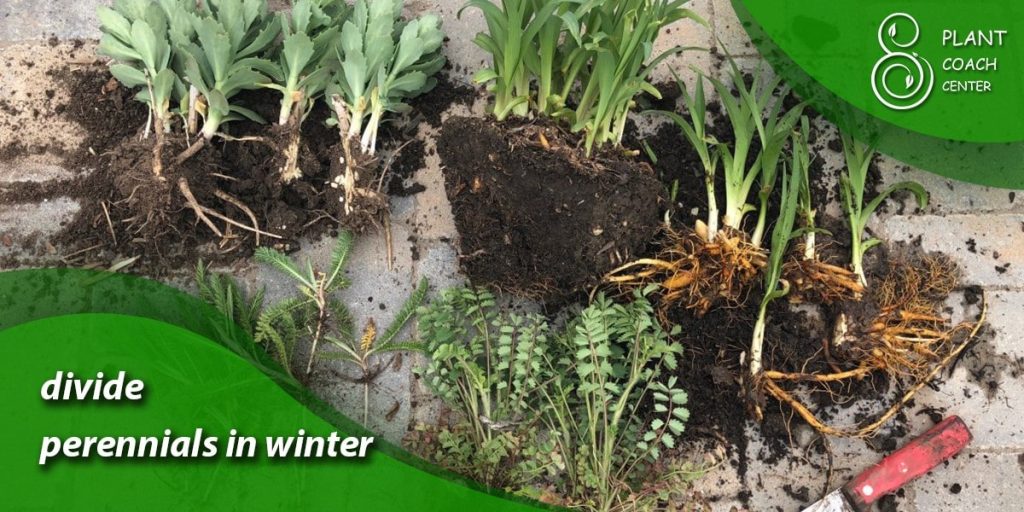
Plant Personalities: Tailoring Division Methods to Different Perennial Types
Just as every person has a unique personality, so do perennials. Each plant type has its own growth habits, root structures, and preferences, meaning the approach to dividing them should be as varied as their characteristics. Let’s explore how to tailor your division methods to different perennial personalities:
Clump-Forming Perennials
These perennials grow in tight clusters, often with a distinct central crown. Examples include hostas and daylilies. To divide them, carefully dig up the entire clump and use your hands or a sharp tool to gently separate the plant into smaller sections, each with its roots and shoots. Be sure to retain some center growth in each division to ensure future vitality.
Rhizomatous Perennials
Plants like irises and lily of the valley spread through underground rhizomes. Dividing them involves digging up the clump and separating the rhizomes into individual sections, ensuring each section has healthy roots and growth points.
Spreading Perennials
Perennials such as creeping phlox and ground cover plants naturally spread through runners or stolons. To divide them, dig up sections of the spreading growth, ensuring that each piece has roots attached. You can then replant these sections to expand the coverage area.
Crown Division
Some perennials, like peonies, have a central crown from which new growth emerges. To divide these, carefully slice the crown into sections, ensuring each piece has roots and buds. Be mindful not to bury the buds too deeply when replanting.
Taprooted Perennials
Plants with taproots, such as coneflowers and salvias, have a single primary root. While dividing tap-rooted perennials can be more challenging, it’s best done in early spring or fall. Gently pry the root ball apart, aiming to keep as much of the root intact as possible.
Divide and Multiply: Maximizing Aesthetic and Ecological Benefits
Dividing perennials extends far beyond merely managing plant growth; it’s a transformative process that yields aesthetic and ecological rewards. By recognizing the dual benefits of division, gardeners can create thriving landscapes that delight the eye and contribute to a healthier ecosystem.
Aesthetic Advantages
Enhanced Blooming: Dividing perennials rejuvenates their root systems, allowing them to absorb nutrients more efficiently. This often leads to increased flowering and more vibrant blooms, turning your garden into a colorful canvas.
Organized Design: Dividing perennials provides an opportunity to redesign your garden layout. You can strategically place divided plants to fill in gaps, create focal points, or establish harmonious color schemes, resulting in a well-structured and visually appealing landscape.
Abundant Textures: Mixing different perennials through division adds layers of texture to your garden. From feathery foliage to bold blossoms, the diverse forms create a visually engaging tapestry that evolves with the seasons.
Ecological Benefits
Resource Optimization: Overcrowded perennials often need help accessing essential resources like water and nutrients. By dividing them, you ensure that each plant has ample space to thrive, reducing competition and promoting overall health.
Biodiversity Boost: Diversifying your garden through division fosters a richer ecosystem. Varied plant species attract a more comprehensive array of pollinators and beneficial insects, contributing to the balance and resilience of the garden’s natural inhabitants.
Soil Enrichment: As perennials grow, their root systems contribute to soil structure and nutrient cycling. Dividing and replanting perennials refreshes the soil with organic matter and encourages microbial activity, improving soil health in the long run.
Sharing and Community: Division benefits your garden and allows you to share the bounty. Gifting divided plants to friends and neighbors fosters a sense of community and spreads the joy of gardening.
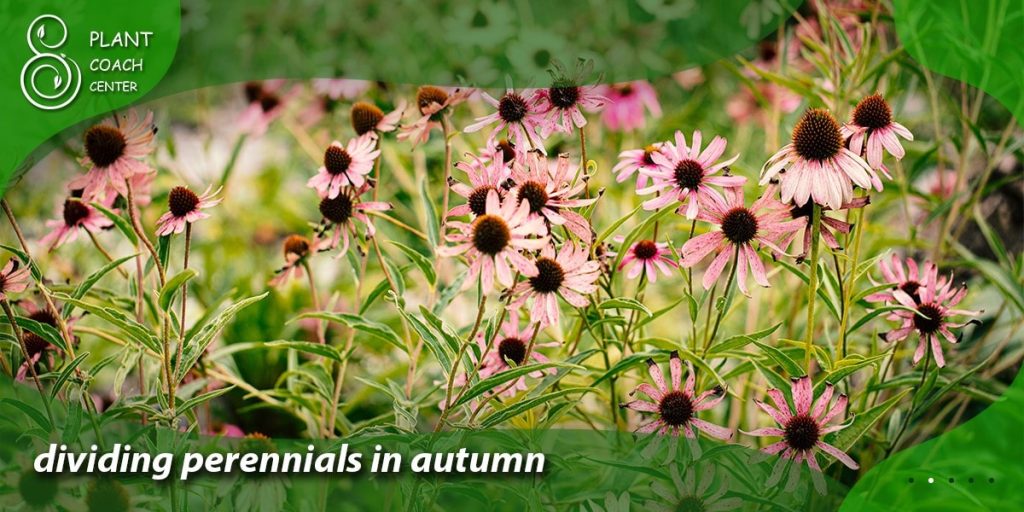
Potential Pitfalls: Common Division Mistakes and How to Avoid Them
While dividing perennials offers numerous rewards, it has its potential pitfalls. Avoiding these common mistakes is crucial to ensure your divided plants thrive and flourish in their new homes. Let’s delve into some of these pitfalls and learn how to sidestep them:
Timing Troubles
Dividing perennials at the wrong time can shock the plants and hinder their recovery. Avoid dividing during the heat of summer or the frosty grips of winter. Stick to the recommended seasons, usually spring or fall, to give the plants the best chance at success.
Overly Aggressive Division
While dividing a perennial into as many pieces as possible is tempting, over-division can weaken the plants. Make sure each division has enough roots and growth points to sustain itself. A good rule of thumb is to aim for at least three healthy shoots and a substantial root system per division.
Neglecting Aftercare
Divided perennials require careful aftercare to help establish their new locations. Adequate watering, mulching, and protection from harsh weather conditions are essential for their survival.
Replanting Too Deeply
Planting deep divisions in the soil can hinder their growth and even lead to rotting. Ensure the crown (where roots meet stems) is level with the soil surface to avoid suffocating the plant.
Improper Soil Preparation
It’s essential to prepare the soil properly before replanting divisions. Mix in compost or organic matter to improve drainage and nutrient availability. Neglecting this step can lead to poor growth and lackluster blooms.
Disregarding Plant Health
Dividing unhealthy or diseased perennials can spread the issues to the newly planted sections. Always divide only healthy plants and avoid carrying potential problems into your garden beds.
Skipping Division Altogether
On the flip side, neglecting to divide overcrowded perennials can lead to reduced blooming, stunted growth, and a decline in overall health. The regular division helps rejuvenate the plants and maintain their vitality.
Rushing the Process
Division requires patience and care. Rushing through the process can lead to damaged roots and stressed plants. Take your time to delicately handle the divisions and ensure their well-being.
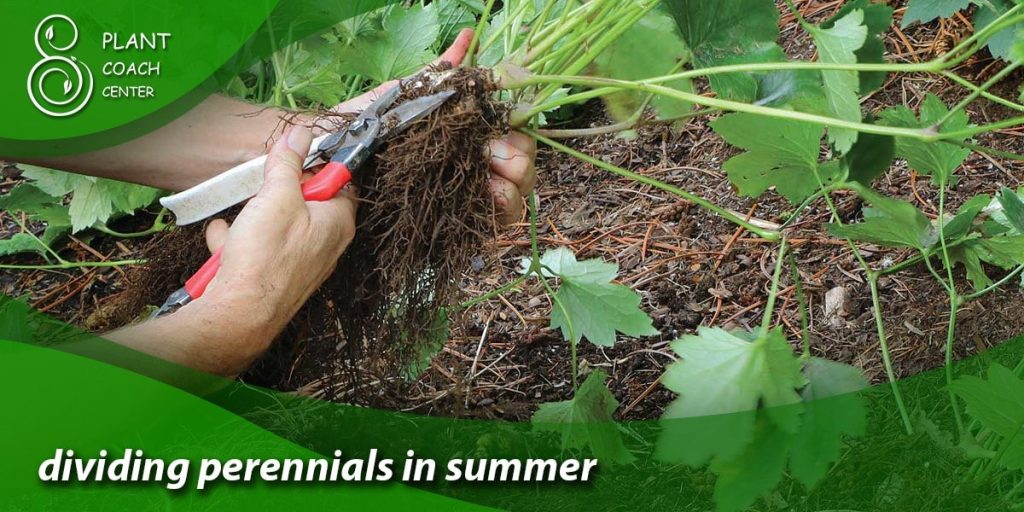
Conclusion
As we conclude this journey through the world of perennial division, it’s evident that this horticultural practice goes beyond the surface-level act of splitting plants. It’s a dialogue between gardener and garden, a harmonious choreography that syncs with the cadence of nature. By understanding the signs, mastering the techniques, and appreciating the diversity of plant personalities, we become co-creators in our landscapes, nurturing beauty and balance.
Remember, the process is free of missteps, but we can gracefully sidestep common pitfalls armed with knowledge. So, whether you’re enriching your garden’s aesthetics or contributing to its ecological vibrancy, division remains a pivotal act of care and cultivation. At PlantCouchCenter.com, our passion for gardening continues to grow, just like the thriving perennials in your landscape. Happy dividing!
When is the best time to divide perennials?
Spring or fall when plants are less stressed.
How do I know if my perennial needs division?
Overcrowding, reduced flowering, and weak growth are signs.
What's the key to successful division?
Proper timing, healthy divisions, and attentive aftercare.


